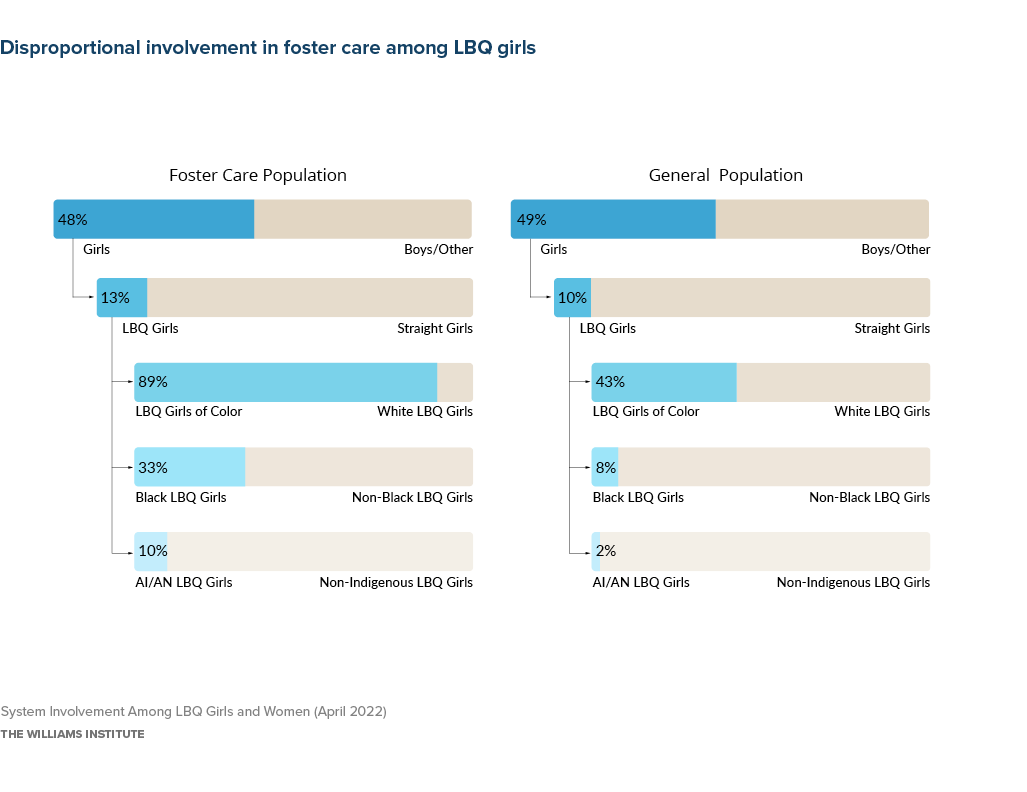Executive Summary
Histories of foster care and incarceration are deeply intertwined in the U.S., and these are both systems in which research has shown an overrepresentation of LGBTQ youth, especially those that are girls and/or youth of color. This factsheet provides an overview of data across multiple studies demonstrating the disproportional impact these two systems have on girls and women who are also sexual minorities (lesbian, bisexual, queer, or LBQ).
Research shows that LBQ girls are overrepresented in foster care, particularly American Indian and Black LBQ girls.
- More than four times as many LBQ girls (cisgender and transgender) in foster care are American Indian or Black than in the general population of sexual minority girls.
In criminalization systems, cisgender LBQ girls and women are highly overrepresented.
- Among those who are incarcerated, the percentage of girls and women who are LBQ is 3 and 10 times higher, respectively, than the proportion of queer girls and women in the general population.
- The majority of LBQ girls and women who are incarcerated are racialized minorities.
- There are no adequate population-level data from juvenile facilities, adult jails, and prisons that allow for adequate estimates of the transgender girl and women population in criminalization systems.
- Nonetheless, data from incarcerated settings indicate that transgender youth and adults, including transgender girls and women, experience higher rates of assault and solitary confinement than cisgender inmates.
Our research highlights the need for an intersectional approach to policymaking that considers the impact of systems on girls and women along dimensions of race and sexual orientation. Overall, data across multiple studies thus far indicate that while girls and women as a whole are not disproportionally in child welfare and criminalization systems, sexual and racial minority women among them are highly overrepresented.
Download the full report
